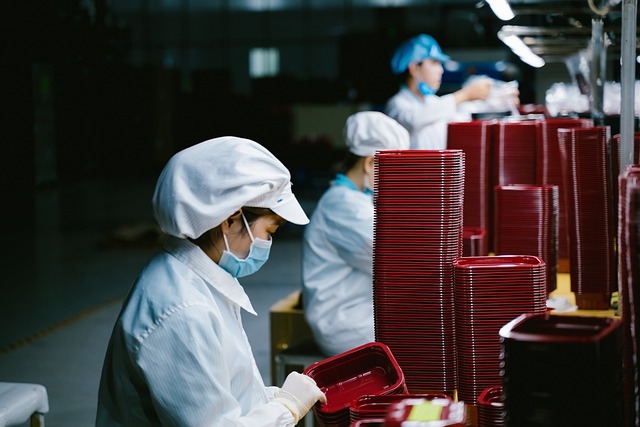The concept of smart factories represents the pinnacle of the Industry 4.0 revolution, integrating advanced technologies such as the Internet of Things (IoT), artificial intelligence (AI), and automation to create an interconnected, self-optimizing production environment. Unlike traditional manufacturing, smart factories leverage real-time data, predictive analytics, and autonomous systems to enhance efficiency and quality.
Evolution of Manufacturing
The journey of industrial evolution is nothing short of revolutionary, with each phase marking a leap in technology and efficiency. Industry 1.0, beginning in the late 18th century, saw the dawn of mechanization, as steam and water power transformed industries that once relied on manual labor.
This was the birth of mass production, where machines took over tasks once done by hand, reshaping economies and societies. Moving into the early 20th century, Industry 2.0 heralded the age of mass production, powered by electricity and the advent of assembly lines. Factories grew faster, and products became more accessible, sparking economic booms worldwide.
The late 20th century introduced Industry 3.0, where computers, robotics, and automation began to take center stage, enhancing precision and reducing the need for human intervention. Finally, Industry 4.0 brings us to the present day, where cyber-physical systems, the Internet of Things (IoT), artificial intelligence, and real-time data analytics are creating smart factories that learn, adapt, and evolve autonomously. Each phase has driven progress, creating an interconnected world where technology doesn’t just support but amplifies human capabilities.
Key Components of a Smart Factory
To function efficiently, a smart factory relies on several core technologies:
1. Internet of Things (IoT)
IoT enables machines, sensors, and systems to communicate and share data, allowing for real-time monitoring and predictive maintenance. Sensors embedded in equipment collect crucial data on temperature, vibration, and wear, reducing unexpected downtime.
2. Artificial Intelligence & Machine Learning
AI-driven systems analyze production data to optimize processes, detect anomalies, and improve decision-making. Machine learning models continuously refine performance by identifying patterns and inefficiencies.
3. Cloud Computing & Big Data
Smart factories generate vast amounts of data, which are stored and analyzed in the cloud. This ensures accessibility, enhances collaboration and supports seamless integration across global supply chains.
4. Cybersecurity
As factories become increasingly connected, robust cybersecurity measures are essential to protect against cyber threats and data breaches. Advanced encryption, firewalls, and AI-driven security systems safeguard digital infrastructure.

Benefits of Implementing a Smart Factory
1. Increased Efficiency & Productivity
Smart factories streamline production through automation and data-driven insights, significantly reducing downtime and waste. Machines can self-optimize in real time, leading to faster production cycles.
2. Cost Savings
By automating routine tasks and predictive maintenance, businesses can reduce labor costs and prevent costly machine failures. Data analytics help identify inefficiencies, further driving down expenses.
3. Enhanced Quality Control
AI-powered systems can detect defects in real-time, ensuring higher product quality and reducing recalls. Automated quality control minimizes human error, leading to consistent manufacturing standards.
4. Sustainability & Reduced Environmental Impact
Smart factories utilize energy-efficient processes, optimize resource consumption, and reduce waste. AI-driven systems identify areas for improvement, making production more sustainable.
Challenges and Barriers to Adoption
Despite the advantages, transitioning to a smart factory presents challenges:
1. High Initial Investment
Implementing a smart factory requires significant capital investment in IoT devices, AI software, and infrastructure upgrades. Small and medium-sized enterprises (SMEs) may find the cost barrier challenging.
2. Cybersecurity Risks
Increased connectivity exposes manufacturing systems to cyber threats, including hacking, malware, and data breaches. Companies must invest in robust cybersecurity solutions to mitigate risks.
3. Workforce Training & Skill Gaps
A smart factory requires a skilled workforce trained in AI, data analytics, and automation technologies. Companies must invest in employee training to bridge the skill gap.
The Future of Smart Factories
The next decade will see continuous advancements in smart factory technology, further enhancing efficiency and innovation.
1. Industry 4.0 and Beyond
The transition from Industry 4.0 to Industry 5.0 will focus on human-machine collaboration, with AI assisting human workers rather than replacing them. This shift will emphasize customization and flexibility in production.
2. AI and Robotics Innovations
Advancements in AI and robotics will lead to fully autonomous factories, where machines handle complex decision-making with minimal human intervention. Collaborative robots (cobots) will work alongside human workers, improving productivity and safety.
3. Sustainability and Green Manufacturing
Future smart factories will prioritize eco-friendly production methods, integrating renewable energy sources, zero-waste processes, and circular economy principles to minimize environmental impact.
Frequently Asked Questions
What is a smart factory?
How does AI contribute to smart factories?
What industries benefit from smart factories?
What are the main challenges of implementing a smart factory?
How do smart factories improve sustainability?
What is the future of smart factories?
Conclusion
The smart factory is transforming the manufacturing industry, enhancing efficiency, quality, and sustainability. While challenges exist, the long-term benefits far outweigh the obstacles, paving the way for a more innovative and resilient manufacturing sector. As technology continues to evolve, smart factories will play a crucial role in shaping the future of production.

